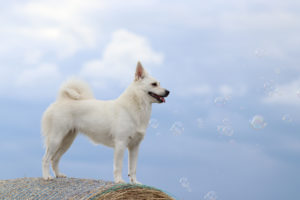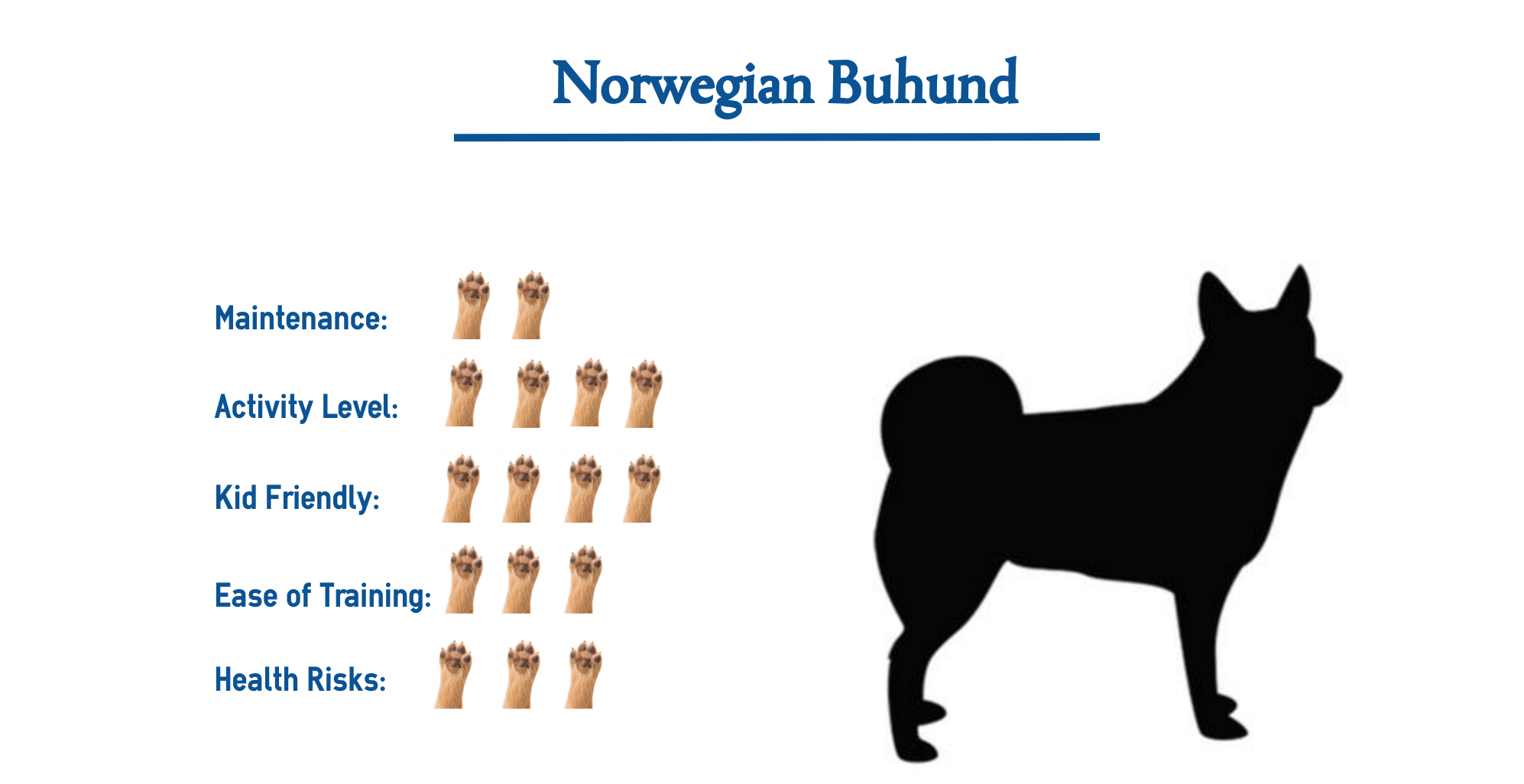Remember the Vikings? The Vikings, the most fearsome warriors in history, went on expeditions that took them everywhere, including the New World. No matter where the Vikings went, they had one brave watchdog protecting them – the Norwegian Buhund. Ironically though, the Buhund is not a big dog. He hardly rises to a height of 18 inches. But he was a faithful and loyal watchdog to the Vikings and will undoubtedly be one for you too!
 You see…
You see…
His job was to defend the ship from dangerous birds of prey, such as raptors, which stole the lambs and poultry. Now imagine sailing into the unknown and having your food supply stolen by birds of prey. No wonder the Vikings appreciated the role played by watchdogs like the Buhund and took this dog wherever they went.
Now back then…
These delicate creatures were referred to as the Norsk Buhund in the Norwegian language, and when not exploring the world, they were also used as a farm dogs seeing how they just seemed to find a way of making themselves useful.
Nowadays…
The Buhund is better known for being a companion dog or family dog. He is an intelligent, cheerful, hard-working dog, yet… constantly barking enthusiastically. This makes him a perfect companion dog for those who need hearing assistance. This is why even though we here at IndulgeYourPet find these guys quite delightful, you may not be in a situation where their “traits” will work for you. This is why we wanted to take a moment and discuss exactly what it might be like to own a Norwegian Buhund so that if you’re ever given the opportunity to own one, you’ll know for sure if it’s a good idea.
So, without further ado, let’s dive right in!
Norwegian Buhund Fast Facts
Country of Origin: Norway
Original Purpose: Protection, herding, and hunting.
Height: 16 to 18.5 inches at the shoulder
Weight: 26 to 40 pounds
Dog Breed Classification: Herding group
Life Span: 12 to 15 years
Origin of the Norwegian Buhund Dog Breed
As said earlier, the Norwegian Buhund dog has an incredible story behind him. You see, these were the dogs that the Vikings took with them on their unending journeys worldwide. This means like most “ancient” breeds, while their “existence” is usually well documented, the actual “origin” can be a bit “sketchy.”
Now what…
We do know that a Viking Grave dating back to the tenth century was excavated a few years back. Archaeologists found six skeletons of dogs that looked very much like the Buhund as we know him today. This aligns with the stories about how these dogs were highly loyal to their masters and would often be killed off when their masters died so that they could continue to protect their owners in the afterlife!
Fortunately…
For the Buhund, times have changed, and these dogs are no longer expected to help their owners pillage the seven seas! Instead, these dogs found a new role as farm dogs, keeping predators such as wolves and bears away from the farm animals. He was later used as a police dog and a military dog. He was a popular fixture in dog shows held in Norway in the 1920s. It was in 1939 that the first Norwegian Buhund Club was formed.
But…
Even though this breed has been around for centuries, it has yet to be well known in the United States. Only in the 1980s was he brought to the U.S., later recognized by the United Kennel Club in 1996 and classified as a Northern breed. Ultimately the American Kennel Club (AKC) decided to “officially” recognize the Buhund as a member of the Herding Group in 2009.
However, even today, only a few people in the U.S. are familiar with this breed. He remains only moderately successful here. Hopefully, that is going to change fast. We see no reason why not.
Physical Characteristics
The Buhund is a mid-sized dog, only about 18 inches tall. He weighs anything from 30 to 40 pounds and has classic Spitz characteristics, which include erect prick ears, slender pointed muzzle, tightly curled, high set tail, sturdy, robust physique, and square-shaped, stocky body. He wears a gentle expression on his face. His eyes are rimmed in black and dark in color. He has a dense, water-resistant double coat, which offers excellent protection from the harsh weather conditions of Norway.
His outer coat…
It is short and coarse, and the undercoat is thick and soft, similar to Nordic breeds such as the German Spitz, Keeshond, and Samoyed. His coat is usually of the colors bright orange, wheaten or black.
The one nice thing about the Buhund is that he is a deficient maintenance dog. He doesn’t require much grooming. But he sheds heavily twice a year. During the shedding season, you will have to brush his coat daily.
Temperament and Personality
The Buhund exudes confidence. He is an energetic dog constantly communicating through his friendly and enthusiastic barking, yodels, yips, chortles, and trills. He always says something and wants you to stop everything you’re doing now and pay him attention.
But his barking can…
Get serious if he suspects something amiss, such as an unwanted intruder approaching the house. The Norwegian Buhund is an innovative, discerning dog who is intelligent enough to separate friend from foe. This goes back to his days as a farm dog or herding dog, when he used to guard his flock of sheep against wolves and foxes.
He is an excellent family dog the Buhund is great with kids. He enjoys playing with children and loves being a part of their games. He is protective of the household’s kids and always watches over them.
He is a loyal dog…
Who develops a strong emotional connection with his human family. He considers himself a part of the family and will want to be a part of everything you do. He is not the sort of dog that you ignore. He will not let you do that to him!
Easy to Train
He is an intelligent dog and is very easy to train. He performs spectacularly well in dog sports such as rally, agility, and obedience. He is responsive to the owner’s commands and does very well in mental stimulation exercises.
Potential Health Problems
The Norwegian Buhund is a healthy dog breed with a life expectancy of 12 to 15 years. He can live longer if he gets the proper medical treatment whenever he needs it.
He is known to suffer from the following diseases…
Cataracts and Hip Dysplasia are treatable, but as you know, the vet bills can be high these days, catching you completely off guard. And while many of these conditions may not be life-threatening, they can become quite expensive, particularly if they become recurring issues. This is why we here at IndulgeYourPet also recommend that any new pet owner take a moment and see what it might cost for you to purchase a pet insurance policy for your new animal.
Now will a pet insurance policy be suitable for everyone?
No, probably not. But until you fully understand what these policies “will” and “won’t” cover and how much these pet insurance policies cost, how will you know if one might be right for you?
For more information on who we feel currently offers the “best” pet insurance policies out there, we would encourage you to check out our Best Pet Insurance Policies article.




Is this dog good with other dogs? I have two at home, one that is medium sized and one small but chunky one. Bigger one is shy but can be playful and smaller one can be feisty but is also calm. Both are around 10-11 years old.